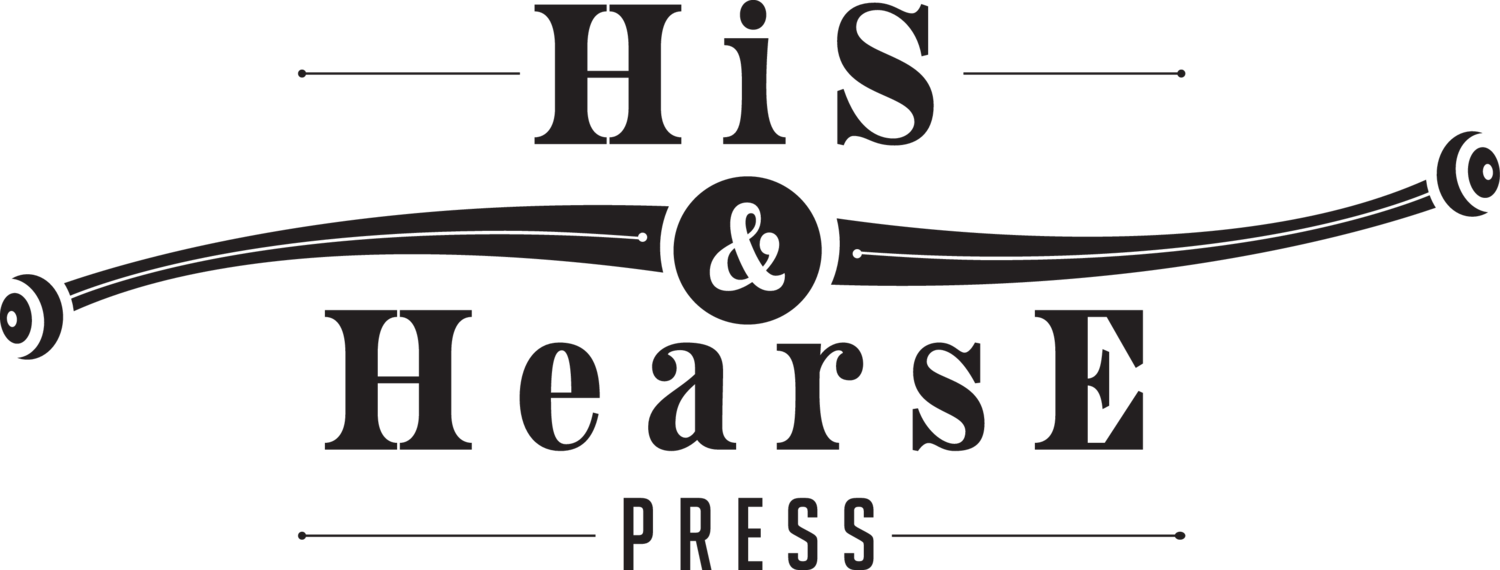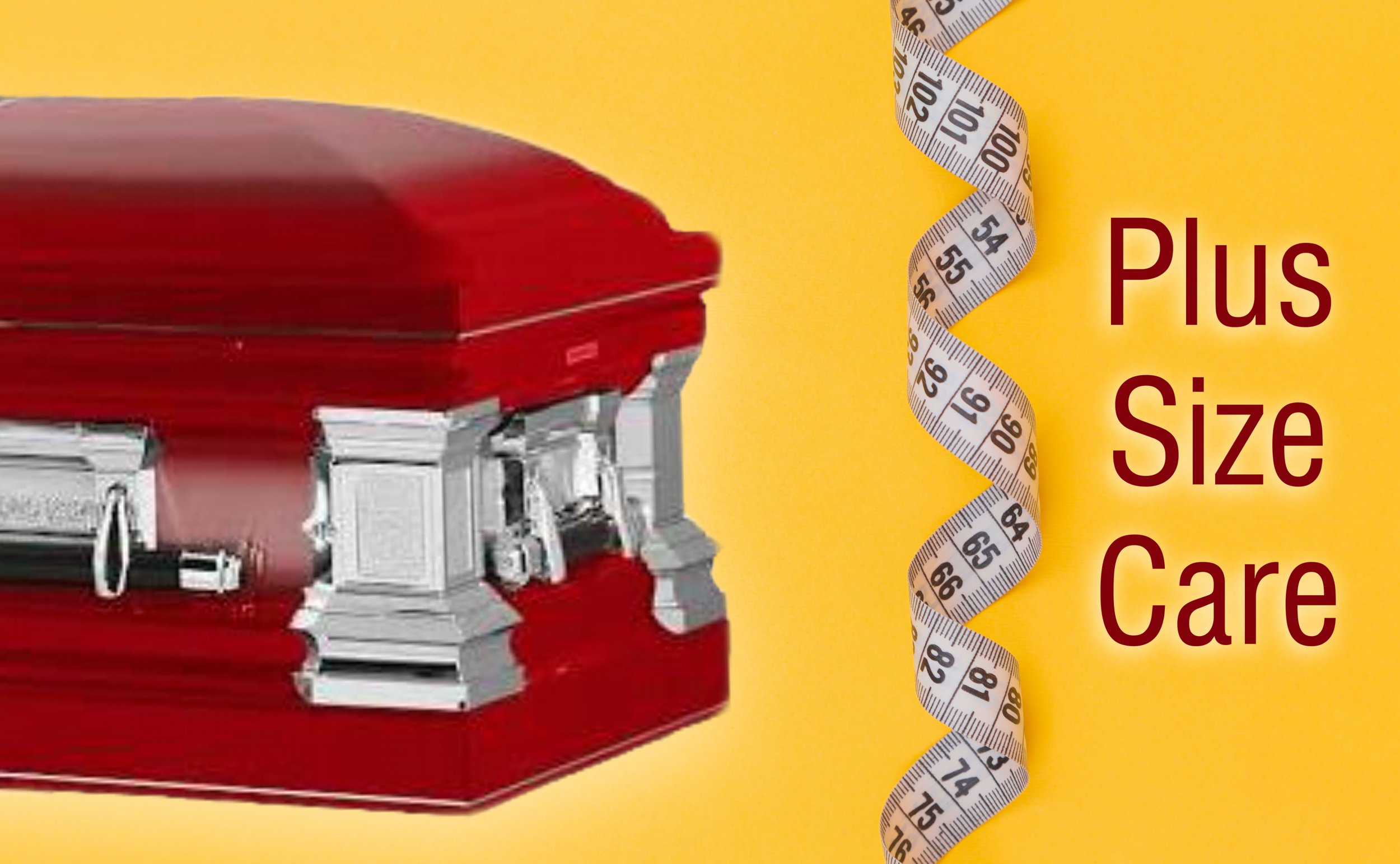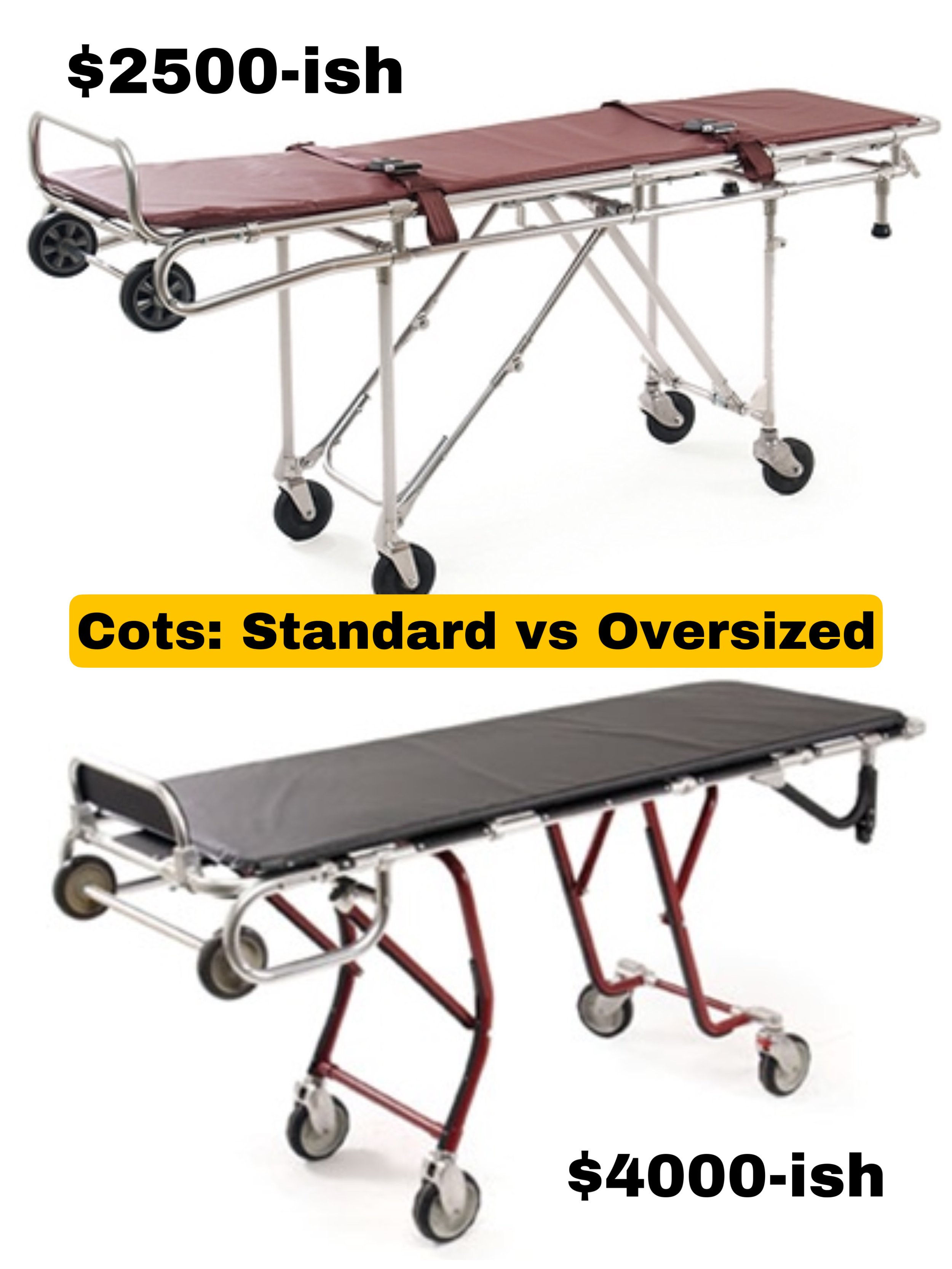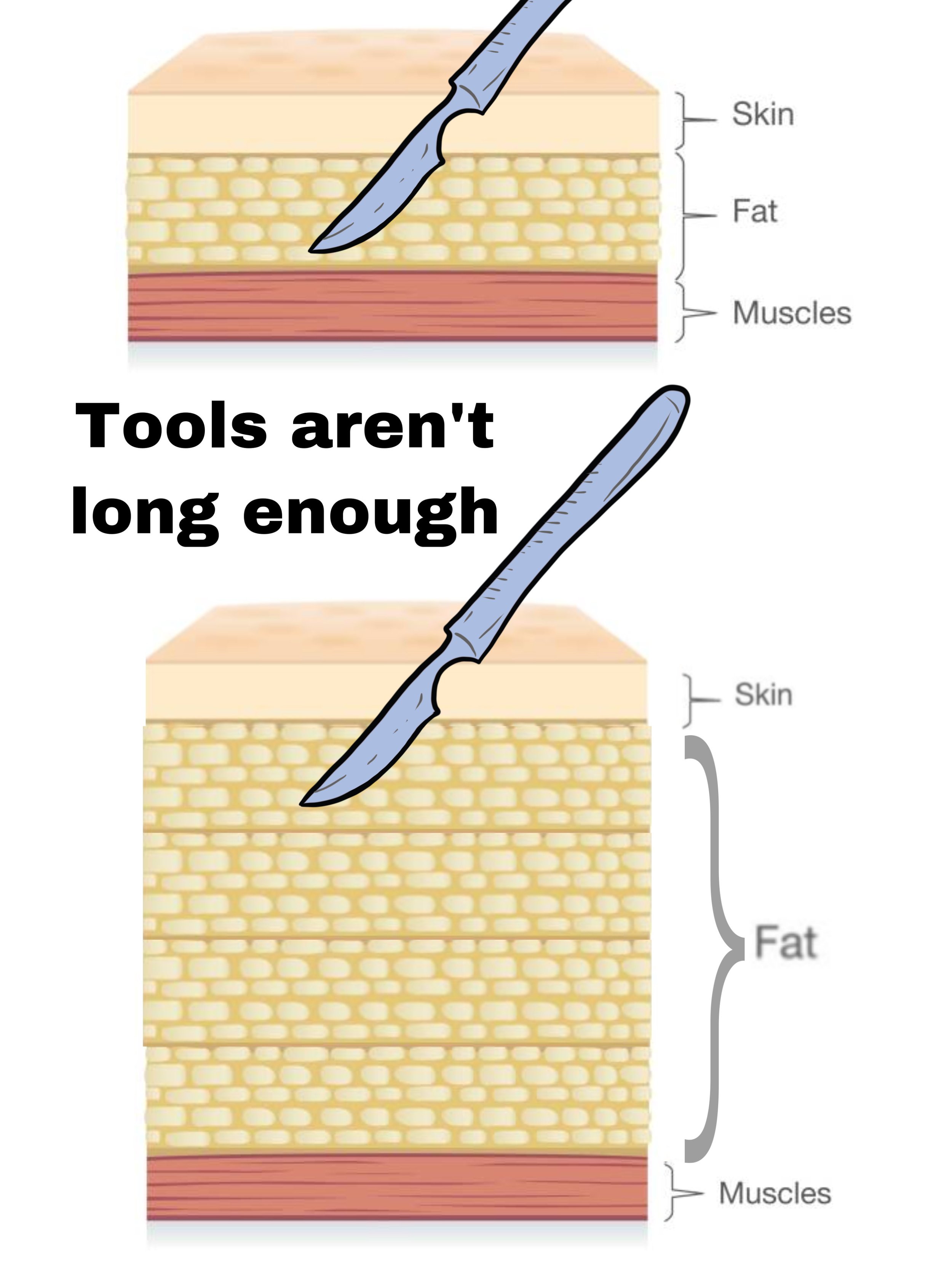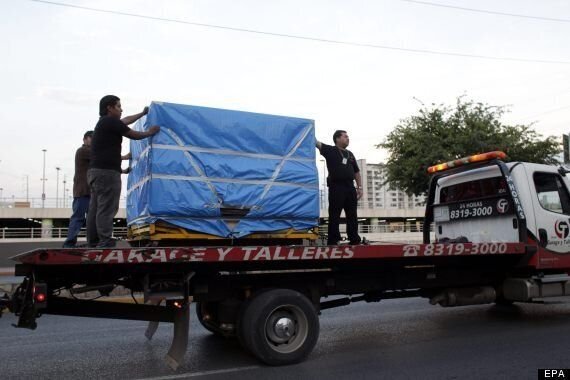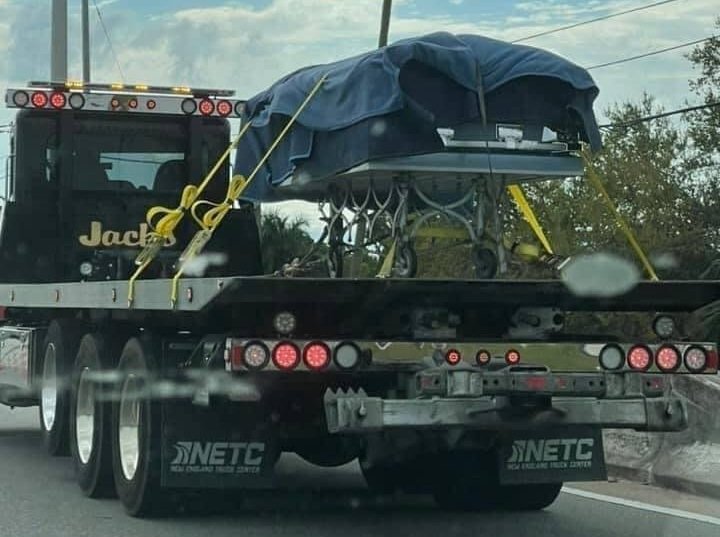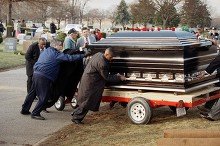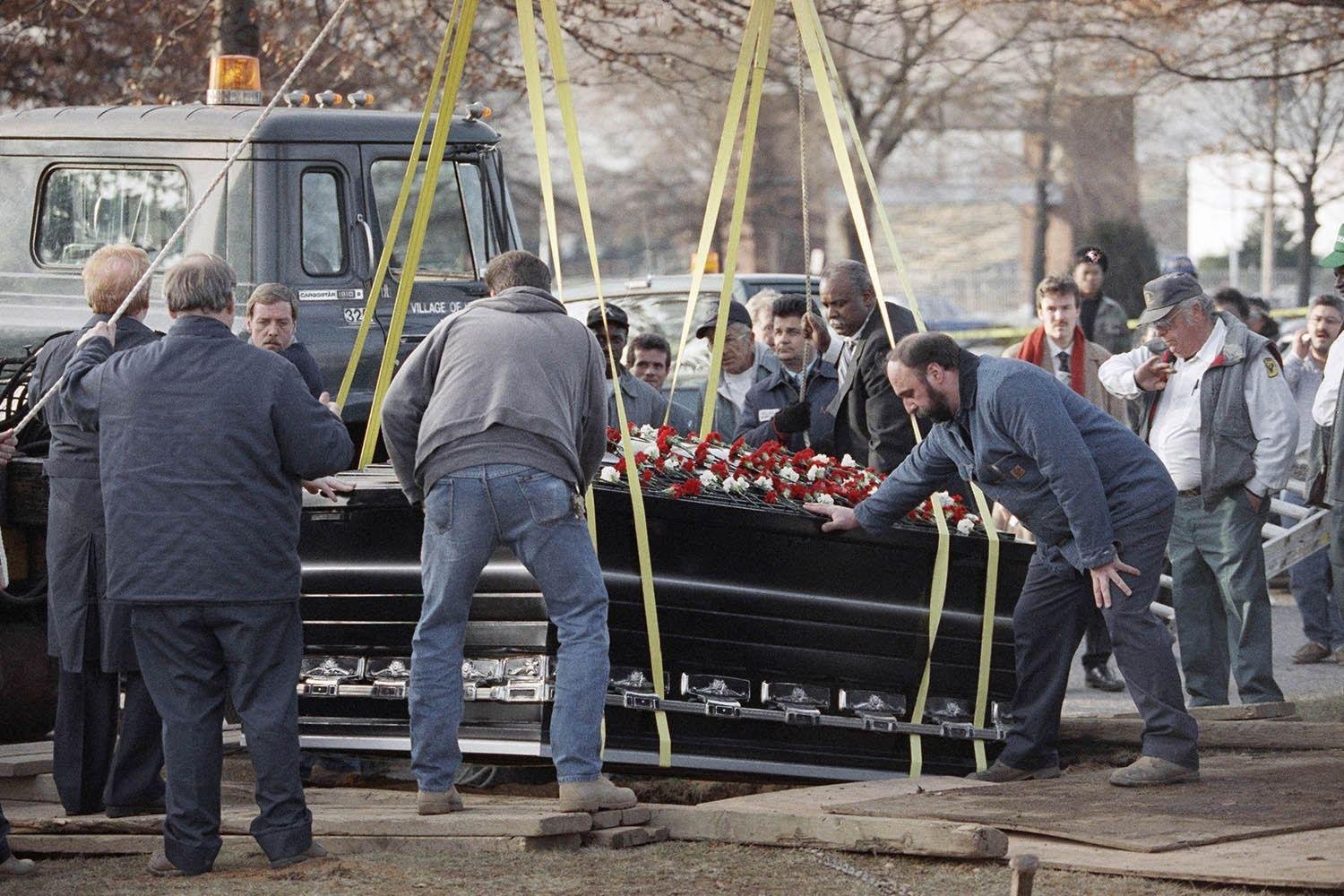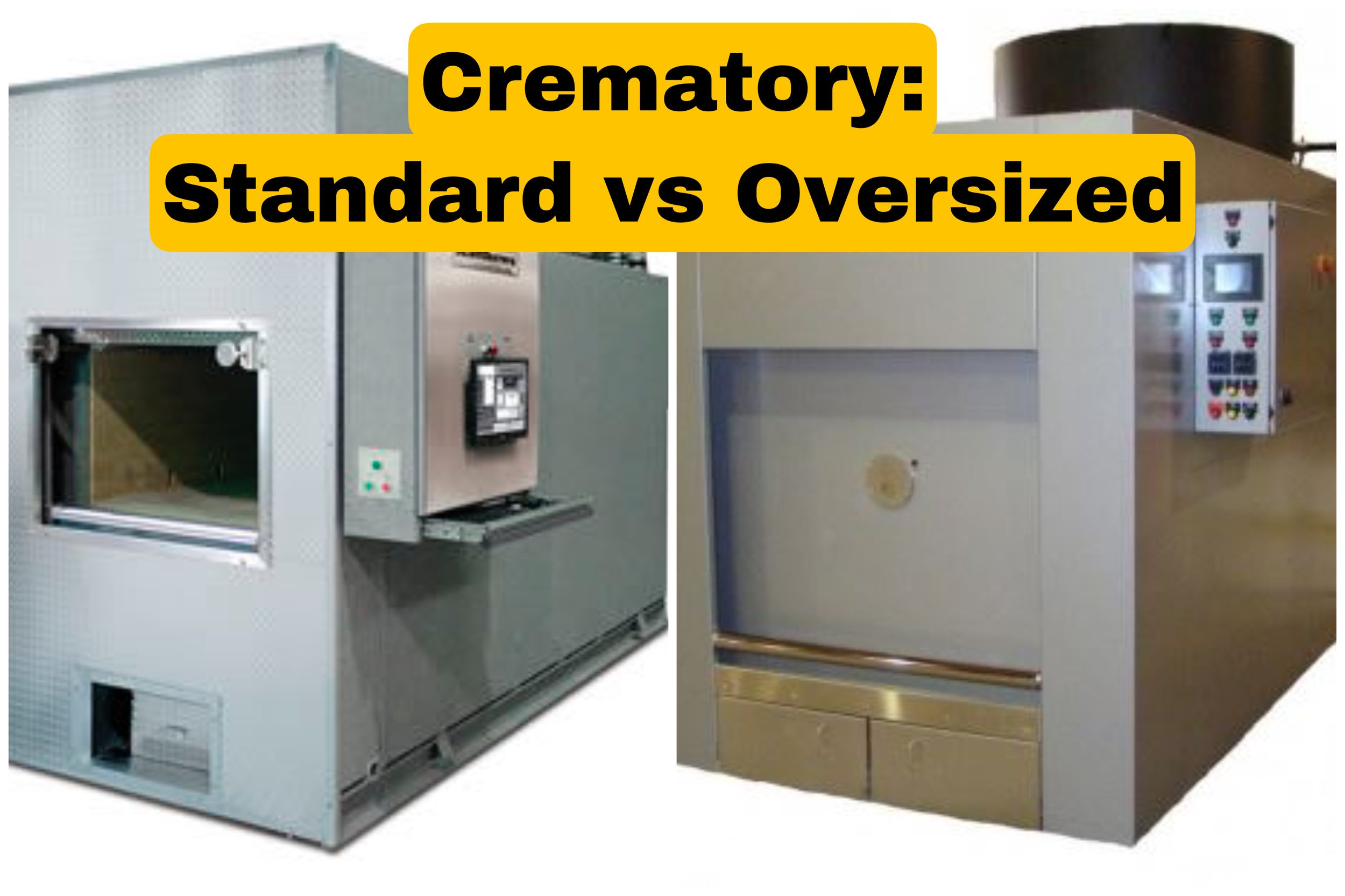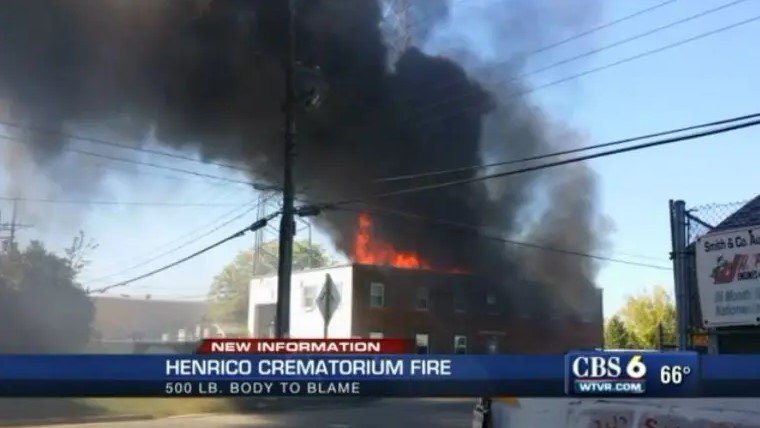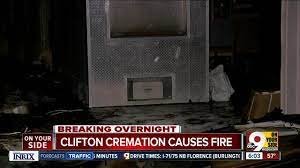Plus Size Postmortem Care
Funerals aren’t always “one size fits all”
Funeral professionals deal with a variety of stigmatized deaths.
We’re obliged to serve everyone with compassion, even in difficult situations (like drunk drivers, murderers, drug addicts, and suicides). Despite having actual human emotions and opinions, we withhold personal judgement and try to care for the dead equally. We’re rarely called out (negatively or positively) for our willingness to treat other complicated cases with dignity and respect, yet many of the general public believe we don’t extend that same level of care to fat people.
Yes, I said fat people.
Let’s get some things cleared up right now. There are many words used to describe larger bodies. Medical professionals use words like obese, morbidly obese, and bariatric. The funeral industry uses the word “oversized.” We can argue all day about the pros and cons of plus sized, overweight, heavy, big, large, stout, portly, husky, corpulent, voluptuous, and people of size.
Society has assigned negative connotations to these words, but the people in question are trying to embrace terms like “fat” and take them back. However, that’s beyond the scope of this lesson.
What exactly is my point here?
This is a very touchy subject. Not just in the funeral world, but society as a whole. For the duration of this lesson, I will ask you to not argue with me about fat shaming, complain about discrimination, or judge funeral professionals. My intent with this post is to teach you about the logistics involved in caring for the oversized deceased.
Some of you are simply curious. Others are worried about how you or a loved one may be treated after death. I want to reassure you we care about helping people, no matter the circumstances.
Oversized
As I mentioned before, the funeral profession typically uses the word “oversized” to describe a body that goes beyond a standard-ish size. It’s a bit of a gray area, to be honest. Some say that the threshold is anyone who exceeds 300 lbs (136 kg). As you can imagine, though, there’s quite a difference between a 4’10” person and a 6’3” person each weighing 300 lbs.
Things like bone density and the muscle to fat ratio also distort the meaning of weight measurements. Let’s just accept that the subject is nebulous and will be interpreted differently by all.
Why must we label people as oversized?
Once a body exceeds that vague and indefinable cut off point, mortuaries need to make accommodations. There are a host of issues to consider. To reiterate, this is not us being judgmental. It’s us handling the logistics. We absolutely need to know if a person is bigger or heavier than usual! Here’s how our typical process is affected when caring for oversized remains.
First Things First: the first call
When we send out our staff to do a first call/removal (pick up the body from the place of death), we ordinarily send one or two people. For pickups in a hospital morgue, one person is often sufficient. For home deaths, we prefer to send two in case there are steps, tight turns, furniture in the way, etc. It’s also more graceful, which is crucial when the family is present.
Now imagine that whoever notified the mortuary neglected to mention that the decedent weighs 500+ lbs. Showing up with one or two people is essentially a waste of time. Those drivers cannot safely and gracefully remove that body. It will take a team, especially if the body is located upstairs or in a small or cluttered space.
This isn’t an issue strictly limited to the dead either. You’ve probably seen TV footage of the fire department removing the wall of a house and team lifting a patient to transport to a hospital. Standard processes simply do not work, and all we can do is the best we can under the circumstances. The harsh reality is that picking up an extremely oversized body is awkward, difficult, and can appear disrespectful. We’re put in the unenviable position of risking injury in order to pretend everything is normal. Though we try to preserve the dignity of the body, we have to do whatever works. It might not be pretty.
An example of the steps involved in removing an oversized patient from their home for medical treatment.
Although this situation involved the medical transport of a living person, it illustrates the complexity of removing an oversized person from certain locations.
Side note here: please be honest when communicating weight to the mortuary. Don’t be ashamed. It’s just something we have to know so we can prepare. We’re going to find out anyway, so tell us during that first phone call. If you’re calling to shop around, be up front so you’re quoted with correct pricing. Understand that there are gray areas and wiggle room. You may have to make some tough decisions to save money, which I’ll explain soon.
Equipment and Facility Limitations
Does the body exceed the weight limit of our cot/gurney? If so, it could collapse unexpectedly or the restraint seatbelts may not fasten over the body. Newer cots are now available with greater capacities, but not all mortuaries own one yet. Two regular cots could potentially be lashed together (dangerous), but they might not fit inside the transport vehicle. Again, this is not limited to dead bodies. Hospitals and ambulances are slowly increasing their size accommodations, but they’re nowhere near finished.
Although these cots look pretty similar, the price difference is significant. Many mortuaries have not upgraded their existing equipment because of the cost.
Once we return to the mortuary, is the doorway wide enough? Is the refrigerator shelf deep enough? Do we have a rolling table that will support the body? Don’t forget that each time we move the body (from place of death to van, van to mortuary door, into the refrigerator, onto an embalming table, and so on), we need extra employees to facilitate the transfer safely.
If the person is going to be embalmed, here are some problems we have to expect. Our embalming table might not be sufficient. Maybe we can tie two together, but that’s not ideal. Our tables have drains at the end that go to the prep room plumbing. Two tables in one station mean extending and rerouting hoses. If the table situation is too precarious, the embalmer may be forced to lay the body directly on the prep room floor near a floor drain.
Oversized bodies also take up more vertical space laying down. As an embalmer of diminutive height, I’ve had to stand on a stepladder in order to reach the top of the body and make my incisions. The depth of the layer of fat made it both impossible to see the artery and vein, and my tools were not long enough to reach though the fat layer. We typically inject about one gallon of fluid per 50 lbs of body weight, so that increases the amount of supplies consumed and the time to complete. It’s also more difficult to see whether we have distribution of embalming fluid throughout the body.
Standard surgical and embalming tools are often inadequate when the adipose tissue is several inches deeper than usual.
Washing the body properly is challenging, if not impossible. Even with additional people helping, it’s scary to roll an oversized and slippery body onto its side in order to clean its back well. If the body has conditions that necessitate the use of plastic garments, we frankly don’t have any large enough to fit. Dressing the body is a team effort, even if we cut the clothing.
Getting the body into the casket is tricky too. For an 80 lb person, the embalmer can literally pick up the body in their arms and place it directly into the casket. If we’re lucky, we have a 1000 lb capacity ceiling lift to hoist the oversized body up and lower it into the casket. That’s another scary and dangerous task.
Besides the risk of dropping the body, there’s also a greater chance that the body will purge fluids from its mouth and nose. The pressure within the body and the inability to aspirate effectively (the trocar is too short!) make it fairly likely.
Oversized Caskets
Caskets are generally one-size-fits-most, but a variety of oversized models are available. For your reference, a typical internal measurement for caskets is about 84” long, 28” wide, and 23” tall. Oversized caskets are built in bigger increments, extending another 2” wide and 3” long per size increase. They commonly start around 31” wide. I’ve seen one online that measured 52” wide. These increases also help accommodate extra tall bodies. We absolutely DO NOT cut people’s legs off to fit.
Choosing a casket for a larger person is a delicate matter because the family has to compare the perceived comfort against a few practical considerations. If they select a casket over a certain size, it won’t fit into a standard burial vault (outer burial container). If they need an oversized burial vault over a certain size, it will not fit into a single grave. A couple of inches difference can double or triple the cost!
Some oversized caskets are still within a reasonable price range, but the larger they get, the costlier they are to produce. More material, more reinforcement, and more time spent during the manufacturing process. That’s just math. It’s similar for burial vaults, which are also heavier to move and are sometimes too large to work with the cemetery’s lowering device.
Lastly, buying two graves obviously costs twice as much as buying a single grave. I managed a workaround for one family by finding a grave in a particular section known for having a little extra room, but that’s uncommon. Don’t rely on flukes like that.
We tread a fine line helping families decide what works best physically and financially. We absolutely want the deceased to fit well into their casket. We want the person to look comfortable and at rest, otherwise what’s the point? We want to be certain that the casket and handles will safely support the additional weight. If a cost-conscious family asks us to shoehorn their loved one into a too-small casket, what should we do?
We try to help by removing extra stuffing and materials from the casket. Some slightly oversized caskets still have traditional external measurements, but are roomier inside. The side walls are thinner and the handles don’t protrude too far. For extra tall people (up to about 7’), we bend their knees, cross their ankles, remove casket material, and adjust the tilt of the mattress bed in order to squeeze a few extra inches of useable space. Anything to avoid bumping up to the next level of casket, vault, and potentially a second grave.
Once an oversized body is in a casket, will that casket fit through doorways? Even if the mortuary doors are wide, the church’s doors might not be. Their aisles might be too narrow as well. Another concern is whether the hearse can fit the casket inside. They have commercial chassis, so the additional weight isn’t the primary concern. It’s whether the door opening is wide enough and tall enough.
See the rollers under the casket?
Another hearse complication: the oversized casket might get stuck to the rollers in the floor! Quick casket lesson. The bottom of metal caskets are stamped with several deep, wide reinforcing grooves. They add strength and rigidity to the overall construction. It’s something that’s usually “out of sight, out of mind,” but it can cause serious problems. The rollers in the floor of the hearse don’t line up the same on wider caskets and can become wedged in the grooves. If you don’t plan ahead and place a sheet of plywood in between, the casket can get stuck.
See the grooved channels on the bottom of these caskets?
If the hearse cannot be used, we may have to resort to a van or even a flatbed truck. If the vehicle is not in our inventory, we have to pay to rent or outsource it.
How is that casket loaded onto a flatbed truck? Six pallbearers are not enough. Hopefully, there are enough able-bodied volunteers to help, or else we’ll need mechanical lifts. It’s yet another dangerous situation for employees who are risking their personal safety.
So… burying an oversized body is HARD. What about cremation instead?
Oversized Cremation
We still have all the above issues regarding transport and refrigeration. Instead of an oversized casket, we need an oversized cremation container. We never insert bodies into a cremation chamber without being inside some kind of box. Besides being the law, it’s also impractical to try to slide a dead body across a bricked oven floor. The simplest, most economical container is plain cardboard.
How thick does the cardboard need to be to support that additional weight and still maintain its structural integrity? At some point, we transition away from cardboard and into a shipping container. An air tray, used to ship caskets on airplanes, comprises a plywood tray bottom with a cardboard lid. We place the deceased directly onto the plywood tray. It should go without saying that an air tray costs more than a cardboard container.
Next problem: can the crematory accommodate oversized remains? Some equipment cannot. The chamber door isn’t wide or tall enough to fit the body. Beyond that, it may not consume the body safely. Mechanically, it is not capable. The retort must be rated for oversized remains AND it still needs to be used carefully.
If your local crematory can’t handle oversized cremations, the mortuary has to transport to another crematory. There are extra fees involved. Sometimes it’s a flat fee, and sometimes they weigh the body and charge by the pound. More powerful equipment can mean more energy and gas consumed.
In a typical cremation, the crematory operator starts the machine then checks on it periodically in-between performing other tasks. The machine does its job. Cremating an oversized case, however, is a lot more work and has the potential to be very dangerous.
First, an oversized cremation absolutely needs to be the first one scheduled in the day so the chamber is “cold.” Some suggest loading the body in reverse so that the bulkiest part is further away from the burner. The operator has to standby and babysit the entire process, keeping a keen eye on the temperature gauge. If the temperature climbs too rapidly, they may need to turn the equipment off for a bit. They have to manipulate the cremation processes (ignition, afterburner) to maintain control.
What happens if control is lost?
It can range from black smoke being released into the atmosphere (a big no-no with local emissions/air quality management) all the way to a grease fire that burns down the entire building. Sounds pretty dramatic, doesn’t it? Remember, fat is fuel for the fire. If the fat starts burning and producing too much heat before it’s consumed, it liquifies and escapes the chamber. It’s also on fire. This is a significant problem and should be prevented at all costs. So, constant and careful monitoring, plus slowing or briefly stopping the cremation if the temperature escalates.
Is it any wonder that an extra fee applies here?
I hope you’re recognizing the difficulty inherent in oversized funerals. We are often judged as discriminatory for charging more money for these cases, or accused of being bullies, or of fat shaming. It’s apparently unacceptable for us to state that oversized cases are harder. But they are. Look at how many times I mentioned the physical struggles we face, the risk of debilitating back injuries, and the additional costs involved for equipment, supplies, and extra staff.
Is it right or wrong?
I can’t say. If our profession is guilty of discrimination, it’s that of passive rather than active discrimination. We do not reject people for their size, we just aren’t equipped to care for them as effectively.
But we should be.
As people are getting larger, and society is becoming more aware of accommodation, ALL industries should move toward solutions. Unfortunately, it’s inconvenient and expensive to retrofit buildings. New cremation chambers can handle larger bodies, but the financial investment is out of reach for many. New hearses are being built with wider and taller doors, but a new hearse costs over $100,000.
It’s the same for our tools, lifts, cots, tables, refrigerators, supplies, and more. We can’t afford to replace every single item all at once. Perhaps we can replace them with better models over time. Our existing cemeteries are already mapped out to maximize the number of graves. Perhaps newly developed land will allow for larger graves, or at least reserve some areas for oversized graves.
We have to pay our employees, and bringing in extra staff to move oversized bodies costs us more. Perhaps this can be remedied with technological advancements in equipment in the future.
While this is clearly an ongoing concern with no immediate solution, I want you to come away from today’s lesson knowing this: funeral professionals strive to maintain the same level of service and respect for everyone. Period.
We don’t blame or shame, even when it makes our work harder. We accept the logistical challenges without judging the deceased, the same as we would for a decomposed or traumatized body. All of those cases are more difficult. They’re hard compared to a “standard little old lady” body.
But it’s what we do. ❤
Veteran funeral director, embalmer, and lifelong bookworm, Louise finally found her purpose: educating and entertaining strangers on the internet about dead bodies and funerals.
Her blog, Read In Peace, combines her passion to educate with fun and humor. She shares tips and useful information about death and funerals, along with lighthearted “dissections” of related books and movies.
Louise is currently working on her first book, a nonfiction guide called Embalming For Amateurs.
